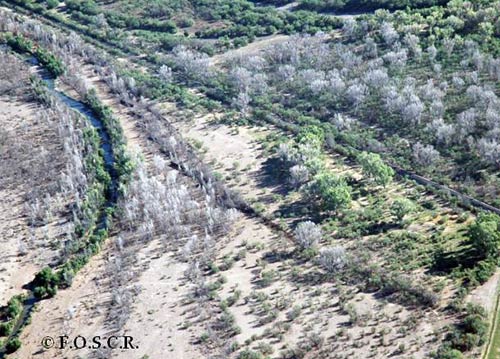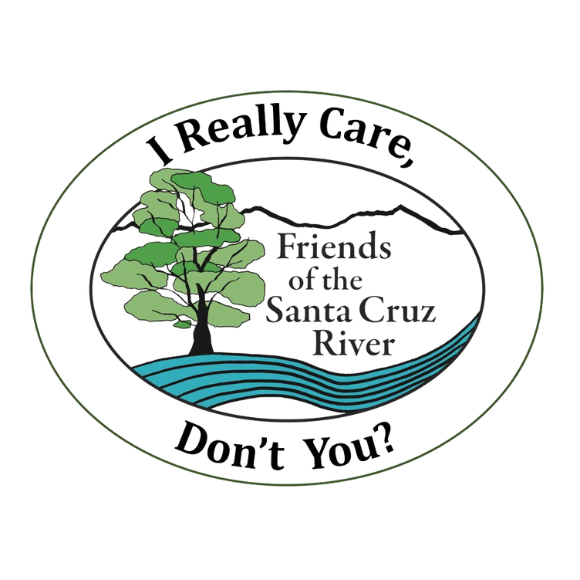[et_pb_section][et_pb_row][et_pb_column type=”4_4″][et_pb_image admin_label=”Image” show_in_lightbox=”off” url_new_window=”off” animation=”off” sticky=”off” src=”https://friendsofsantacruzriver.org/wp-content/uploads/2014/10/riparian_ecosystem.jpg” alt=”Cottonwood and Willow Trees Along Santa Cruz River” title_text=”Cottonwood and Willow Trees Along Santa Cruz River” /][et_pb_text admin_label=”Text” background_layout=”light” text_orientation=”left”]
Riparian Ecosystems
What Is A Riparian Ecosystem?
Riparian ecosystems are made up of the plants and animals living along lakes, rivers, and streams, and the soil, air and water that support them.
They include areas within floodplains that may only rarely see surface flows, but where the “water table” (top of the aquifer, below which the ground is saturated) is shallow enough for plant roots to reach subsurface water.
Here in the arid Southwest, riparian ecosystems are easy to spot, because while shallow groundwater underlies river bottoms, plants on the surrounding uplands—higher terrain with water only far beneath the surface—have to live on scarce rainfall. So the plant types and densities near the river (“riparian”) can be quite different than those living above floodplain levels. Shallow-rooted cottonwoods and willows can thrive less than fifty feet from desert grasslands that cover the higher slopes surrounding them.
To learn more, click to download the Arizona Riparian Council’s Fact Sheet.
Why Are Riparian Ecosystems Important?
Riparian areas provide many benefits to both people and wildlife:
They enhance groundwater recharge (groundwater is where everyone in southern AZ gets our water) by maintaining a layer of spongy soil that can quickly absorb and hold rainfall, as well as developing complex root systems that help water infiltrate into the ground.
- They improve water quality by filtering runoff through sediments, roots, and living soils.
- They provide critical habitat for many wildlife species, some of which live only in riparian areas.
- They prevent widespread erosion by stabilizing soil and absorbing the force of large flood events.
- They provide many opportunities for hiking, horseback riding, birding and other recreational activities.
Is Riparian Conservation Needed?

Riparian ecosystems are in trouble in many parts of Arizona. Along the Santa Cruz River the combined effects of drought, groundwater pumping, flood control measures, water diversions and other human activities have damaged or destroyed many of the cottonwood and willow trees that used to thrive along portions of this river. The picture to the left shows the extensive tree die-off that occurred in the Spring of 2005, most likely from a rapid drop in the water table below the tree roots.
Also, the once-extensive mesquite/elderberry/hackberry forests that flanked the Santa Cruz all the way to Tucson have been largely cleared for agriculture and other human uses.
However, there is still a lot of riparian life to save along the upper Santa Cruz River and its tributaries. This is FOSCR’s mission: to protect, celebrate, and if possible enhance the biological bounty that the river supports.
Learn more about the loss of U.S. wetlands at the U.S. Geological Survey website.
[/et_pb_text][/et_pb_column][/et_pb_row][/et_pb_section]
